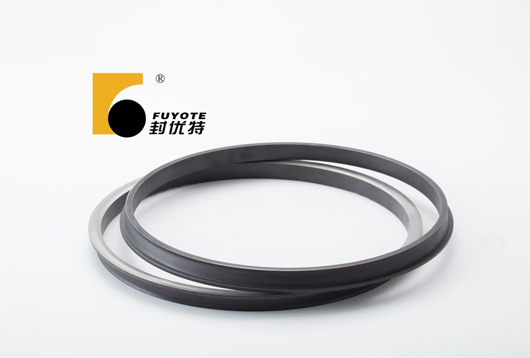Radial shaft seals and floating seals serve as essential components in mechanical engineering, designed to prevent fluid leakage from a machine’s rotating elements and ensure its seamless operation. Although both types of seals fulfill similar functions, notable distinctions exist in their structural composition and operational principles.

The Radial Shaft Seal is typically composed of a sealing ring coupled with a rubber gasket, encompassing both an outer and an inner ring. The inner ring affixes to the shaft, enabling it to rotate in unison, whereas the outer ring is secured to the machine housing and remains stationary. This configuration ensures that the seal effectively inhibits the leakage of liquids or gases from the machine’s interior, mitigating the risk of leakage through the frictional interface between the two rings. Owing to its robust design, the Radial Shaft Seal is particularly well-suited for applications involving high-speed rotational shafts.
The floating seal encapsulates an oil or fluid medium within a metallic sealing ring, employing a differential pressure to inhibit leakage. This seal ring, typically constructed from a combination of metal and rubber, exhibits inherent elasticity. A defining feature of the floating seal is its capacity to accommodate the relative movement between the shaft and the sealed apparatus, thus rendering it exceptionally effective for applications involving significant shaft eccentricity or vibration.

Radial Shaft Seals are primarily designed for static sealing applications; however, they become ineffective when machinery ceases operation. They are typically employed in machinery with less stringent sealing demands, such as electric motors. Conversely, floating seals are adept at maintaining seal integrity in both static and dynamic conditions. They achieve superior sealing performance by autonomously adjusting to fluctuations in external pressure, thus ensuring enhanced efficacy throughout the operational cycle of the machinery. Furthermore, the sealing mechanism of Radial Shaft Seals involves an inner ring affixed to the shaft, necessitating consideration of the force exerted on the shaft. In contrast, floating seals feature a metal seal ring that remains independent of the shaft, thereby eliminating the imposition of additional forces on the shaft. Consequently, floating seals can be employed in scenarios where shaft specifications are less stringent.

Radial Shaft Seals and Floating Seals exhibit distinct differences in their application domains. Radial Shaft Seals are optimal for high-speed rotating shafts, making them prevalent in rapidly operating machinery such as turbines and compressors. Conversely, Floating Seals are designed for low-speed shaft operations and are typically employed in coal mining equipment, including conveyors and coal cutters. Furthermore, Radial Shaft Seals are characterized by their relative simplicity, while Floating Seals necessitate greater precision in manufacturing and meticulous attention to detail.